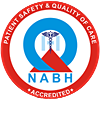Frequently Asked Questions
How should I prepare for my dermatology appointment?
Before your appointment, it’s helpful to make a list of any skin concerns, symptoms, or questions you have. Avoid applying heavy makeup or skincare products, as your dermatologist may need to examine your skin closely. If you are visiting for a specific procedure, follow any pre-appointment instructions provided by our expert doctors, such as stopping certain medications or avoiding sun exposure.
What should I bring with me to my dermatology appointment?
Bring any current medications, including prescriptions, over-the-counter products, and supplements you take regularly. If you use any skincare products, you may also want to bring them for our dermatologist to review. It’s also helpful to bring a list of questions or concerns you’d like to discuss during the appointment.
What happens during a skin biopsy, and why might I need one?
A skin biopsy involves taking a small sample of skin tissue for examination under a microscope. It’s a common procedure used to diagnose various skin conditions, including rashes, infections, and skin cancer. Our dermatologist will numb the area before taking a sample, which is then sent to a lab for analysis. Biopsies are typically quick and done in the office.
How is a mole removal performed, and does it hurt?
Mole removal is a simple procedure often done for cosmetic reasons or if a mole appears suspicious. After numbing the area with local anesthesia, our dermatologist will remove the mole using a scalpel or other techniques. Most patients feel only minor discomfort during and after the procedure. Our dermatologist will provide guidance on aftercare to ensure proper healing.
What is cryotherapy, and how is it used to treat skin conditions?
Cryotherapy is a treatment that uses extremely cold temperatures to freeze and remove skin lesions, such as warts, skin tags, and certain types of moles. During the procedure, liquid nitrogen is applied directly to the affected area. The treatment is typically quick and may cause mild discomfort, but it’s an effective way to remove unwanted skin growths with minimal scarring.
What should I expect during recovery after a skin biopsy or other minor dermatological procedures?
Recovery after minor dermatology procedures is usually straightforward. You may experience mild swelling, redness, or scabbing at the treatment site. Follow any specific aftercare instructions from our specialist dermatologist, such as applying a gentle ointment, keeping the area clean, and avoiding sun exposure. Most small wounds heal within a week or two, but if you notice increased redness, pain, or drainage, contact our dermatologist.
When can I return to my normal skincare routine after a dermatology procedure?
After most dermatological procedures, you can gradually return to your skincare routine once the area has healed, typically after a week or so. However, avoid harsh exfoliants or strong active ingredients like retinol or acids on the treated area until our dermatologist confirms it is safe. Our doctors will give you personalized advice on resuming skincare based on the type of procedure performed.
What are the risks associated with dermatological procedures like biopsies or mole removals?
Dermatological procedures are generally safe and have minimal risks. However, some patients may experience minor side effects, such as temporary redness, swelling, scarring, or infection at the treatment site. Serious complications are rare, and our dermatologist will take steps to minimize risks. Proper aftercare, such as keeping the area clean, can help reduce the likelihood of complications.
What are the benefits of seeing a dermatologist for skin concerns?
Visiting a dermatologist offers many benefits, including expert evaluation and treatment of various skin conditions, from acne and rashes to more serious concerns like skin cancer. Dermatologists can help you achieve healthier skin, treat uncomfortable symptoms, and provide guidance on maintaining your skin’s health. Regular check-ups can also aid in early detection of skin issues, making treatment more effective and improving overall outcomes.



